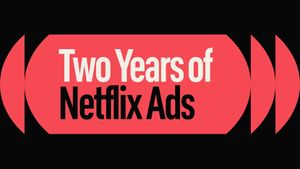Australia's media scene is buzzing with controversy and discussions about regulation, as several recent incidents have sparked debates over content appropriateness and censorship. From the push for more mature-rated programming on free-to-air television to discussions surrounding explicit content on popular radio shows, the stakes are high as various stakeholders express their concerns.
Commercial broadcasters are lobbying to increase allowances for M-rated content, seeking to expand the hours during which such programming can air. This proposal would allow M-rated material for two additional hours daily, extending from 10 AM to 3 PM. Currently, strict regulations dictate M-rated shows can only be broadcast from noon to 3 PM on school days and limited hours during weekends and holidays. Critics argue this move will expose children to inappropriate content and increase the risk of alcohol advertisements during these broadcasts. Professor Elizabeth Handsley, president of Children and Media Australia, voiced her concerns about the timing of this proposal, particularly as Prime Minister Anthony Albanese's government prepares to implement age restrictions on social media for under-16s. Handsley stated, "If we are concerned about all the stuff the kids are doing online, we need to provide a relatively safe space."
The industry, represented by Free TV, faces scrutiny as it argues for the need to adapt its regulatory framework to remain economically viable. The broadcasting regulator has warned the broadcasters about the possible backlash from viewers if M-rated programming becomes more accessible, especially concerning alcohol advertising, which is permitted during these broadcasts. This sensitivity highlights the delicate balance regulators must strike between industry survival and protecting vulnerable audiences, particularly children.
On another front, the radio industry is embroiled in controversy following remarks made by Kyle Sandilands on his radio show alongside co-host Jackie O Henderson. Sandilands has come under fire for flaunting the explicit content broadcasted during the show, which earns millions of listeners but raises ethical questions. Recently, they aired graphic descriptions of sexual scenarios, drawing criticism for normalizing derogatory language and making light of inappropriate content for younger audiences. During one broadcast, Sandilands stated, “Contrary to popular belief, everything on this show is Australian legal broadcast standard-worthy,” attempting to validate their seeming indifference to wake the standards of decency.
Despite growing criticism, including from political figures like Sarah Hanson-Young of the Greens, who describes the content as “revolting, sexist, and divisive,” Prime Minister Albanese has chosen not to condemn the show directly. This decision perplexed many, considering Albanese's past appearances on the program. His silence, along with the opposition leader, Peter Dutton, promotes discussions about media accountability and responsibility. Communication Minister Michelle Rowland’s response emphasized the government's commitment to addressing harmful language but it did little to pacify outraged citizens.
Concerning the broader media regulation framework, the Albanese government is likely experiencing pressure from both public and industry stakeholders to carefully navigate issues of censorship and free speech. The government had previously proposed the Misinformation and Disinformation Bill, which faced backlash over concerns it might impinge on free speech rights. Communication Minister Rowland, unyielding amid criticism, might be forced to seek alternative means to address misinformation should her bill fail to gain traction.
Among the various proposals shaping public discourse, calls to regulate gambling advertisements have emerged as another contentious issue. The Labor Party aims to restrict these ads significantly, especially during children's programming. Yet, the party’s reluctance to push for more stringent regulations showcases the challenges they face when balancing public health interests with financial imperatives from broadcasters.
At this juncture, it’s evident the media environment is at a crossroads, grappling with the shifting dynamics between corporate interests, content appropriateness, and government oversight. With broadcasting standards being challenged, the push for more M-rated content, alongside explicit radio segments, marks a pivotal moment for the regulators and the Australian public alike.



